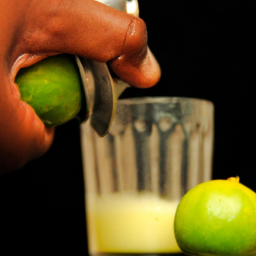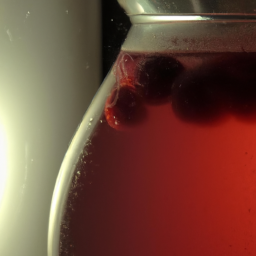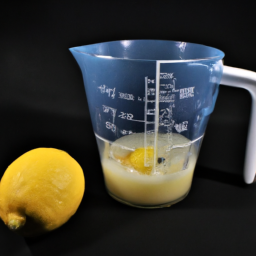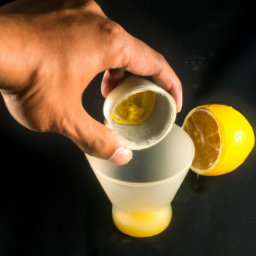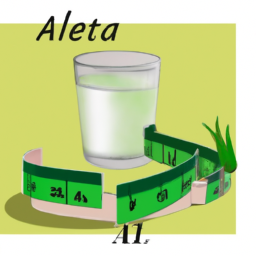It’s scorching hot outside, and all I want is a refreshing limeade to cool off.
But when I cut open my lime, I’m disappointed to find that it barely yields enough juice for one glass.
Frustrated, I start researching ways to extract the most juice out of my limes and discover some helpful tips and tricks.
Whether you’re making cocktails, marinades, or just adding a squeeze of lime to your water, getting the most out of your limes is essential.
Luckily, there are several techniques you can use to extract every last drop of juice from your limes.
In this article, I will share with you some of the best methods for getting more juice out of your limes, so you can enjoy that refreshing citrus flavor to the fullest.
Key Takeaways
- Choose heavy and fully ripe limes with thin, smooth skin for maximum juice yield
- Rolling, microwaving, and freezing limes can help break down membranes and release more juice
- Use a juicer or reamer for easy juice extraction, or try squeezing lime halves with all your might
- Proper storage techniques can maintain lime freshness and ripeness for up to 6 months
Choose the Right Limes
You gotta make sure you’re picking the juiciest limes possible to get the most out of your squeezing efforts! When it comes to choosing the best lime varieties for juicing, there are a few things to keep in mind.
Look for limes that are heavy for their size, as this indicates they are juicier. Additionally, choose limes that have thin, smooth skin, as they tend to yield more juice than their thicker-skinned counterparts.
Another important factor to consider is ripeness and juice yield. It’s best to choose limes that are fully ripe, as they will be the juiciest. You can tell if a lime is ripe by its color – a fully ripe lime will be bright green or yellow. Avoid limes that are too soft or have blemishes, as this may indicate that the lime is overripe and the juice yield will be lower.
By choosing the best lime varieties and ripe fruits, you’ll be optimizing your juice yield and making the most of your lime squeezing efforts.
When you’ve got your juicy limes picked out, it’s time to prep them for squeezing. A great trick to get even more juice out of your limes is to roll them before juicing. This helps to break down the membranes inside the fruit and release more juice.
With these tips in mind, you’ll be well on your way to getting the most juice out of your limes and enjoying all the delicious flavors they have to offer.
Roll the Limes Before Juicing
To extract every last drop of flavor from your lime, give it a good roll on the counter before squeezing it. Remember that a little elbow grease goes a long way. Rolling the lime helps to break down the cell walls, making it easier to release the juices.
This process is not just limited to limes but can also be applied to other citrus fruits such as lemons, oranges, and grapefruits, among others. Here are some benefits of rolling citrus fruits and different types of citrus fruits to roll before juicing:
-
Benefits of rolling citrus fruits:
-
It helps to release more juice from the fruit, making it easier to extract every last drop.
-
Rolling the fruit also helps to break down the membranes, resulting in a smoother and more flavorful juice.
-
It saves time and effort when squeezing the fruit, especially when dealing with large quantities.
-
Different types of citrus fruits to roll before juicing:
-
Limes: Rolling limes before juicing helps to soften their flesh, making it easier to extract their juices.
-
Lemons: Rolling lemons before juicing not only helps to release more juice but also helps to reduce the bitterness of the fruit.
-
Oranges: Rolling oranges before juicing helps to soften their membranes, making it easier to extract their juice.
By rolling your citrus fruits before juicing, you can extract more juice and get the most out of your fruits. But if rolling isn’t enough, you can also try microwaving them for a few seconds to make them even juicier.
Microwave the Limes
Microwaving citrus fruits is a quick and easy way to enhance their juiciness and flavor, providing a hassle-free option for those who want to extract the most from their fruits. When microwaving limes, the heat softens the fruit’s membranes, making it easier to extract the juice. This method also helps to break down the pectin, which increases the amount of juice that can be squeezed out.
The benefits of microwaving limes are plenty, but there are also common mistakes to avoid. Overheating the fruit can cause it to explode, making a mess in the microwave. To prevent this from happening, cut a small slit in the lime before microwaving it. Also, be sure to only microwave the lime for a short amount of time, 10-15 seconds should be enough.
Microwaving the limes is just the first step to getting the most out of your citrus fruits. The next step is to cut the limes in half to allow for easy juice extraction.
Cut the Limes in Half
Now that your limes are nice and warm, it’s time to slice them in half for easy accessibility to their flavorful juice. When it comes to cutting limes, there are different ways to position the halves depending on the type of knife you use.
For instance, if you’re using a paring knife, you can place the lime on its side and cut it in half lengthwise. This way, you can easily remove the seeds and squeeze out the juice. On the other hand, if you’re using a serrated knife, you can cut the lime in half crosswise, creating two circular halves. This method works best if you’re planning on using a reamer or juicer, as it provides a larger surface area for extracting the juice.
Regardless of the knife you use, make sure to apply even pressure when cutting through the lime to avoid losing any juice.
Now that you have your lime halves ready, it’s time to extract the juice. One way to do this is by using a juicer or reamer. By placing the lime half on the device and twisting it back and forth, the juice is extracted from the pulp. However, if you don’t have a juicer or reamer, you can still get the most out of your lime by using a fork or citrus squeezer to extract the juice.
Use a Juicer or Reamer
Using a juicer or reamer is the easiest way for you to extract all that delicious lime juice. Here are a few tips to help you get the most out of your lime using these alternative methods:
- Choose a juicer or reamer that best suits the size of your lime, so you can extract all the juice without any waste.
- Before juicing, roll the lime on a hard surface to break down the fibers and make it easier to extract the juice.
Clean your juicer or reamer thoroughly after each use with warm soapy water and a brush to scrub away any pulp or debris. Regular maintenance, such as sharpening the blades or replacing any worn parts, will help to ensure that it continues to work effectively.
Now that we’ve covered alternative methods for juicing limes, let’s move on to another option – using a fork or tongs to extract the juice.
Use a Fork or Tongs
By using a fork or tongs, you’ll be able to extract every bit of juice from your lime without the need for any specialized tools. These alternative tools are perfect for those who don’t have a juicer or reamer on hand, or for those who want to save time and effort.
To use a fork or tongs, simply cut your lime in half and grab a utensil of your choice. Place the lime half onto a flat surface and hold it steady with one hand. With the other hand, press the fork or tongs into the flesh of the lime and twist it back and forth. This will help to break up the pulp and release the juice.
The benefits of using a fork or tongs are that they’re readily available, easy to use, and can extract almost all of the juice from the lime. Plus, they’re easily cleaned and stored away when you’re finished.
Now that you’ve extracted all of the juice from your lime using a fork or tongs, it’s time to move onto the next step: microwaving the lime halves.
Microwave the Lime Halves
So, I’ve found that if I want to get even more juice out of a lime, microwaving the halves can be a game changer. By heating the lime halves, the juice becomes more fluid and easier to extract.
To do this, I recommend using a microwave-safe bowl and covering the lime halves with a microwave-safe lid or wrap. This method can be especially helpful when you’re in a time crunch or don’t have a citrus juicer on hand.
Heat the Halves for Additional Juice Extraction
To get even more juice out of your lime, try heating the halves in the microwave for a quick and easy way to loosen up the juice. There are several benefits of heating the lime halves before squeezing them. Firstly, heat helps break down the cell membranes in the fruit, making it easier to extract the juice. Secondly, heating the lime also makes it juicier and more pliable, allowing you to extract every last drop of juice.
When heating the lime halves, there are a few best practices to follow. First, make sure to cut the lime in half before placing it in the microwave. Then, heat the lime halves for about 10-15 seconds on high power. Be cautious not to overheat the lime, as this can lead to a bitter taste. Cover the lime halves with a paper towel or microwave-safe lid to prevent the juice from spraying all over the microwave.
Once heated, remove the lime halves from the microwave and squeeze them over a bowl or directly into your dish. With these simple tips, you can get the most juice out of your lime without any hassle.
Use a Microwave-Safe Bowl and Cover
When microwaving your lime, make sure to use a microwave-safe bowl and cover it with a lid or paper towel to create a cozy cocoon that will help your lime release its flavorful potential like a caterpillar emerging from its chrysalis. Using a microwave to extract juice from your lime is a quick and easy way to get the most juice out of your fruit without putting too much effort into it. The microwave’s heat softens the lime, making it easier to extract juice and also helps break down the lime’s cell walls, allowing the juice to flow out more easily.
There are different types of microwave-safe covers to choose from, such as plastic wrap, silicone lids, and even glass lids. Each cover has its benefits, but choosing the right one can make a significant difference in the outcome of your lime juice. For example, plastic wrap is great for creating a tight seal around your bowl, while silicone lids are reusable and can be easier to clean. Glass lids are also an option, but they can get hot and are more delicate. Ultimately, the choice of cover will depend on your personal preference and the type of bowl you are using. Now that you know how to properly microwave your lime, let’s move on to the next step: using a citrus press to get even more juice out of your fruit.
Use a Citrus Press
When it comes to getting the most juice out of a lime, using a citrus press is a game-changer. By pressing the lime halves, you can extract more juice than by simply squeezing them by hand.
There are two types of citrus presses available – manual and electric – and the choice between them depends on personal preference and frequency of use. As someone who frequently uses limes for cooking and cocktails, I highly recommend investing in a citrus press for maximum juice extraction.
Press the Lime Halves for Maximum Juice
Squeezing those lime halves with all your might will give you every last drop of delicious juice. However, you need to know the right hand squeezing techniques to get the maximum yield.
Start by rolling the lime on a hard surface to loosen up the flesh. Then, cut it in half lengthwise with a sharp knife. Hold the lime half with the cut side facing down over a glass or bowl.
Place your hand on top of the lime and press down, moving your hand in a circular motion. This will help to extract the juice from every corner of the lime.
If you want to make the process even easier, you can use lime juicing accessories. A handheld citrus reamer or juicer is a simple tool that can make a big difference. These devices have ridges or bumps on the bottom that help to break up the pulp and release the juice.
Place the cut side of the lime half on the reamer or juicer, and twist it back and forth while applying pressure. This will help to extract as much juice as possible.
Now that you know how to squeeze lime halves for maximum juice, it’s time to choose a manual or electric press.
Choose a Manual or Electric Press
Opting for a manual or electric press is like choosing between a classic handwritten letter or a quick text message – both get the job done, but one requires more effort than the other. When it comes to getting more juice out of a lime, deciding on which type of press to use can make a big difference. Let’s take a look at the pros and cons of each option and compare their costs.
Manual presses, also known as citrus squeezers, require physical effort to extract juice from a lime. They are usually made of metal or plastic and are hand-held, making them portable and easy to use. On the other hand, electric presses are powered by electricity and can produce more juice with less effort. They also come in different sizes and shapes, making them suitable for different types of limes. However, they tend to be more expensive than manual presses, and some models may require more maintenance. Here’s a table that summarizes the pros and cons and cost comparison of both options:
| Press Type | Pros | Cons | Cost |
|---|---|---|---|
| Manual | Portable, easy to use, inexpensive | Requires physical effort, may not extract all juice | $5 – $20 |
| Electric | Can produce more juice with less effort, suitable for different types of limes | More expensive, may require more maintenance | $20 – $100+ |
Now that we’ve discussed the different types of presses and their pros and cons, let’s move on to another way to get more juice out of limes – freezing them.
Freeze the Limes
To get the most juice out of your limes, try freezing them before use. This technique is particularly useful for those who want to maximize the amount of juice they can get from their limes. Frozen lime benefits are numerous, as freezing them can help to break down their cell walls and release more juice.
This is because the water in the cells expands when frozen, causing the cell walls to rupture. When the lime thaws, the juice is more easily extracted due to the weakened cell walls. To freeze your limes, simply place them in a plastic bag and put them in the freezer. They can be frozen for up to 6 months, making it an effective lime preservation technique.
Once you’re ready to use the limes, thaw them out completely before cutting and juicing. By following this simple step, you’ll be able to extract more juice from your limes and enjoy their full flavor. To ensure that your limes stay fresh and flavorful for as long as possible, it’s important to store them properly.
Store the Limes Properly
Hey, lime lovers! Keep your limes fresh and zesty by storing them properly – just like you would a treasure in a chest. Proper storage techniques are essential for maintaining lime freshness and ripeness. Here are some tips on how to store your limes:
-
Keep your limes in a cool, dark place. Exposure to sunlight and heat can cause limes to ripen too quickly and lose their freshness.
-
Store your limes in a breathable container. Limes need air circulation to stay fresh, so avoid sealing them in an airtight container.
-
Separate your limes from other fruits and vegetables. Limes release a gas called ethylene, which can cause other produce to ripen and spoil faster.
-
Check your limes regularly for signs of spoilage. Look for soft spots, mold, or a bad smell. If you notice any of these signs, it’s time to use or discard your limes.
By following these proper storage techniques, you can ensure that your limes stay fresh and flavorful for longer. Incorporate these tips into your lime-loving routine and savor the zesty goodness of your limes for weeks to come!
Frequently Asked Questions
Can I use bottled lime juice instead of fresh lime juice?
I wouldn’t recommend using bottled lime juice instead of fresh. Fresh lime juice has benefits that bottled doesn’t, such as a brighter taste and more vitamin C. The taste difference is noticeable in cocktails, dressings, and marinades.
How can I tell if a lime is fresh and ripe?
To identify ripeness, I look for plumpness and smooth, bright skin. Avoid limes with brown spots or shriveled skin. Proper storage in a cool, dark place can extend the shelf life.
Can I use a blender instead of a juicer or reamer?
A blender can be used to extract juice from a lime, but a reamer or hand juicer may be more effective. Electric juicers are also an option. Consider the desired quantity and quality of juice when choosing a method.
How long can I store lime juice in the fridge?
To maximize the benefits of storing lime juice, it’s important to understand its shelf life. Fresh juice can be refrigerated for up to a week, but freezing options offer longer preservation. Proper storage maintains the juice’s quality.
What are some recipes that use a lot of lime juice?
I love using lime juice in recipes! Lime heavy cocktails like margaritas and mojitos are always a hit. Lime infused marinades are great for chicken and fish. Don’t forget about lime dressing for salads. Yum!
Conclusion
After trying all of these methods, I can confidently say that the key to getting more juice out of a lime is to choose the right limes, roll them before juicing, and use a juicer or reamer.
These methods consistently yielded the most juice with the least amount of effort. Additionally, microwaving the limes and using a citrus press can also be effective techniques for maximizing the amount of juice you can get from your limes.
Think of your lime as a precious gem that needs to be handled with care. By following these tips, you can unlock the true potential of your limes and extract every last drop of juice.
With a little practice, you’ll be able to impress your friends with your newfound ability to make the perfect margarita or add a zesty kick to your favorite dish.
So go forth and juice those limes like a pro!
Ilana has been a vegan for over 10 years. She originally made the switch for health reasons, but soon found herself becoming more and more passionate about the ethical and environmental implications of a vegan lifestyle. Ilana is the author of The Graceful Kitchen, a blog all about veganism. She loves to cook up delicious and nutritious vegan meals, and share her recipes with others who are interested in leading a cruelty-free life. Ilana is also a strong advocate for using whole foods as the foundation of a healthy diet, and believes that going vegan is one of the best ways to achieve this.
